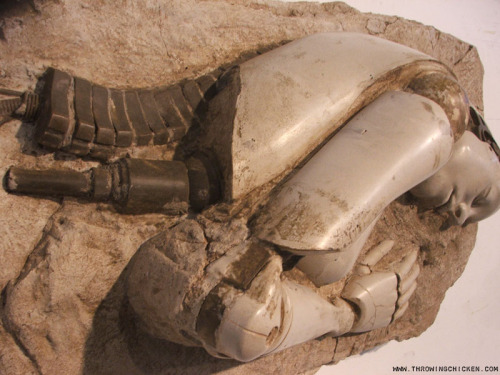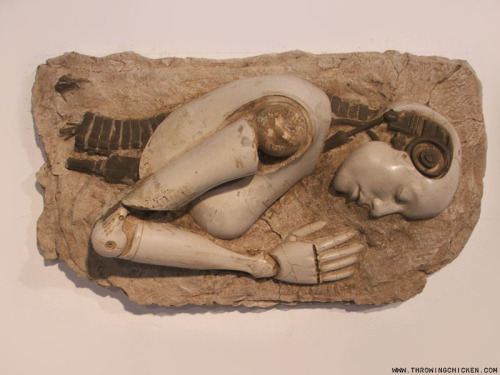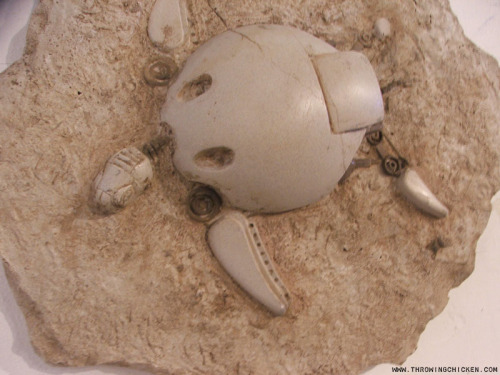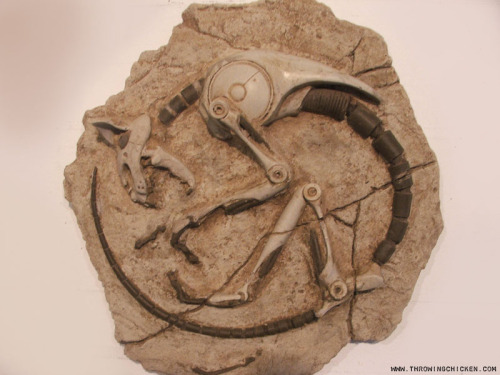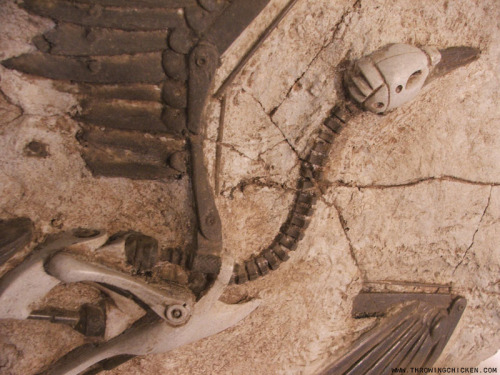As Soon As You Think “maybe I Can Get Up Early And Just Finish It Tomorrow” You’ve Already Lost
As soon as you think “maybe I can get up early and just finish it tomorrow” you’ve already lost
More Posts from Secretagentpeptidebond and Others
Day in the life of a scientist
Me, at an art store: I need a paint marker with low toxicity and a delicate tip.
Employee: What kind of project are you working on?
Me: It's for a research project. I just need bright colors.
Employee: What medium are you using? Canvas or paper?
Me: uh....spiders.
Employee: Plastic or felt?
Me: ....live spiders. Like, from the forest.
Employee: ....
Employee: I have to get back to the counter.
That one time my roommate couldn't watch Shane's Asagao Academy stream so I live-texted it to her instead.










@didyouknowshaning‘s asagao stream part 1/part 2

Copper essential for burning fat, researchers find
Though small amounts of copper are essential to health - oysters, liver, beans and nuts are good sources - copper’s role in metabolism has been unclear: Some studies found that it boosted fat burning, others that it depressed it.
University of California, Berkeley, Lawrence Berkeley National Laboratory and Howard Hughes Medical Institute researchers have now clarified the critical role that copper plays in nutrition: It helps move fat out of fat cells - called adipocytes - and into the blood stream for use as energy.
Without enough copper, fat builds up in fat cells without being utilized, said Christopher Chang, the Class of 1942 Chair and a professor of chemistry and of molecular and cell biology at UC Berkeley.
“Unlike other studies that link copper levels both to increased or decreased fat metabolism, our study shows definitively how it works - it’s a signal that turns on fat cells,” said Chang, who also is a faculty scientist at Berkeley Lab and a Howard Hughes Medical Institute investigator. “If we could find a way to burn fat more efficiently, this could be a big contribution to dealing with obesity and diabetes.”
The new study appeared online this week, and will be published in the July print issue of the journal Nature Chemical Biology.
“Copper regulates cyclic-AMP-dependent lipolysis” by Lakshmi Krishnamoorthy, Joseph A Cotruvo Jr, Jefferson Chan, Harini Kaluarachchi, Abigael Muchenditsi, Venkata S Pendyala, Shang Jia, Allegra T Aron, Cheri M Ackerman, Mark N Vander Wal, Timothy Guan, Lukas P Smaga, Samouil L Farhi, Elizabeth J New, Svetlana Lutsenko and Christopher J Chang in Nature Chemical Biology. Published online June 6 2016 doi:10.1038/nchembio.2098
Caption: The crystal structure of the cAMP-degrading enzyme phosphodiesterase PDE3B, showing two magnesium atoms (green) in the active site. Copper binds one of the amino acid residues in the pink loop at the left, blocking the activity of the enzyme. Credit: Lakshmipriya Krishnamoorthy and Joseph Cotruvo Jr., UC Berkeley



Black Bread Mold
The above images show the sporangium (fruiting bodies) of the bread mold, Rhizopus Stolonifer, growing on the surface of bread.
MORE INCREDIBLE MICROGRAPHS OF BREAD MOLD
Spores circulate freely in the air. On a favorable medium, they germinate a network of hyphae (threads). Their function is to absorb food for growth & for spore production. Rhizopus produces stolons, or aerial hyphae, which on contact with the medium grow rhizoids or ‘rootlets’. They anchor the fungus & absorb some water. Spores develop in saclike bodies, or sporangia (globular structure). They are carried at the ends of specialized hyphae called sporangiophores.
Rhizopus sp. are generally saprophytic, feeding on decaying animal and plant matter. However they can also be parasitic, feeding on living plants, animals and even humans.
Images above © Science Source
-
 cseconds liked this · 3 weeks ago
cseconds liked this · 3 weeks ago -
 fourthoverfifth reblogged this · 2 months ago
fourthoverfifth reblogged this · 2 months ago -
 saltmatchescandlewax reblogged this · 3 months ago
saltmatchescandlewax reblogged this · 3 months ago -
 lookmomitsmytmblr liked this · 3 months ago
lookmomitsmytmblr liked this · 3 months ago -
 deeneedsaname reblogged this · 3 months ago
deeneedsaname reblogged this · 3 months ago -
 daengeli liked this · 4 months ago
daengeli liked this · 4 months ago -
 fueledbymischief reblogged this · 4 months ago
fueledbymischief reblogged this · 4 months ago -
 deeneedsaname liked this · 4 months ago
deeneedsaname liked this · 4 months ago -
 the-letter-horror-lover liked this · 6 months ago
the-letter-horror-lover liked this · 6 months ago -
 princess-hammerhead liked this · 6 months ago
princess-hammerhead liked this · 6 months ago -
 shadytrashfiremaker-blog liked this · 7 months ago
shadytrashfiremaker-blog liked this · 7 months ago -
 kileywarrick liked this · 7 months ago
kileywarrick liked this · 7 months ago -
 billiestylinson liked this · 8 months ago
billiestylinson liked this · 8 months ago -
 k1ll3rqu33n liked this · 11 months ago
k1ll3rqu33n liked this · 11 months ago -
 a-skeleton-of-something-m0re reblogged this · 11 months ago
a-skeleton-of-something-m0re reblogged this · 11 months ago -
 hopeless-soul-happyface reblogged this · 11 months ago
hopeless-soul-happyface reblogged this · 11 months ago -
 s-h-y-y-a-n-n-e liked this · 11 months ago
s-h-y-y-a-n-n-e liked this · 11 months ago -
 s-h-y-y-a-n-n-e reblogged this · 11 months ago
s-h-y-y-a-n-n-e reblogged this · 11 months ago -
 folksonomy reblogged this · 1 year ago
folksonomy reblogged this · 1 year ago -
 radgeorgie reblogged this · 1 year ago
radgeorgie reblogged this · 1 year ago -
 zeljkec-blog liked this · 1 year ago
zeljkec-blog liked this · 1 year ago -
 221justanotherblog reblogged this · 1 year ago
221justanotherblog reblogged this · 1 year ago -
 bruder-vor-luder reblogged this · 1 year ago
bruder-vor-luder reblogged this · 1 year ago -
 endlesstimeleft reblogged this · 1 year ago
endlesstimeleft reblogged this · 1 year ago -
 heartless-lullaby-xo reblogged this · 1 year ago
heartless-lullaby-xo reblogged this · 1 year ago -
 alexandramariabraia reblogged this · 1 year ago
alexandramariabraia reblogged this · 1 year ago -
 exclusiveofyou liked this · 1 year ago
exclusiveofyou liked this · 1 year ago -
 rosesandrainbows reblogged this · 1 year ago
rosesandrainbows reblogged this · 1 year ago -
 sidecutkid reblogged this · 1 year ago
sidecutkid reblogged this · 1 year ago -
 sincerelyeli reblogged this · 1 year ago
sincerelyeli reblogged this · 1 year ago -
 sincerelyeli liked this · 1 year ago
sincerelyeli liked this · 1 year ago -
 zigaretten-hoe reblogged this · 1 year ago
zigaretten-hoe reblogged this · 1 year ago -
 gbeex liked this · 1 year ago
gbeex liked this · 1 year ago -
 highxpectations reblogged this · 1 year ago
highxpectations reblogged this · 1 year ago -
 changing-mylife-now reblogged this · 1 year ago
changing-mylife-now reblogged this · 1 year ago -
 renardlune reblogged this · 1 year ago
renardlune reblogged this · 1 year ago -
 charly2504 reblogged this · 1 year ago
charly2504 reblogged this · 1 year ago -
 charly2504 liked this · 1 year ago
charly2504 liked this · 1 year ago -
 ohnesinnxo liked this · 1 year ago
ohnesinnxo liked this · 1 year ago -
 skarlat99 reblogged this · 1 year ago
skarlat99 reblogged this · 1 year ago -
 skarlat99 liked this · 1 year ago
skarlat99 liked this · 1 year ago -
 hi-justbeyourself reblogged this · 1 year ago
hi-justbeyourself reblogged this · 1 year ago -
 awfully-fond reblogged this · 1 year ago
awfully-fond reblogged this · 1 year ago -
 kanjinyxaoki reblogged this · 1 year ago
kanjinyxaoki reblogged this · 1 year ago -
 onenightcriteria reblogged this · 1 year ago
onenightcriteria reblogged this · 1 year ago -
 hey-slow-down-grab-the-rauhl liked this · 1 year ago
hey-slow-down-grab-the-rauhl liked this · 1 year ago






